
Sanmill
Sanmill is an open-source, UCI-like Mill/Morris/Merrills/Mühle/Malom (and its variants) program with CUI, Flutter GUI and Qt GUI, sharing and freely distributing the code, tools and data needed to deliver this mill game. We do this because we are convinced that open software and open data are key ingredients to make rapid progress.
Stars: 177

Sanmill is a free, powerful UCI-like N men's morris program with CUI, Flutter GUI and Qt GUI. Nine men's morris is a strategy board game for two players dating at least to the Roman Empire. The game is also known as nine-man morris , mill , mills , the mill game , merels , merrills , merelles , marelles , morelles , and ninepenny marl in English.
README:





Sanmill is a free, powerful UCI-like N men's morris program with CUI, Flutter GUI, and Qt GUI. It is distributed under the GNU General Public License version 3 (GPL v3), ensuring that it remains free software. Users can modify and redistribute the software, provided they adhere to the GPL terms.
Nine men's morris is a strategy board game for two players dating back to the Roman Empire. The game is also known as nine-man morris, mill, mills, the mill game, merels, merrills, merelles, marelles, morelles, and ninepenny marl in English.
This distribution of Sanmill consists of the following files:
-
Readme.md: The file you are currently reading. -
Copying.txt: A text file containing the GNU General Public License version 3. -
src: A subdirectory containing the full source code, including a Makefile for compiling Sanmill CUI on Unix-like systems. -
src/ui/flutter_app: A subdirectory containing a Flutter frontend. -
src/ui/qt: A subdirectory containing a Qt frontend.
Sanmill offers two frontend options: Flutter and Qt. The primary focus is on the Flutter frontend, which is actively developed and maintained, supporting Android, iOS, Windows, and macOS for a consistent cross-platform experience. The Qt frontend is mainly used for debugging the AI engine and is not actively maintained. Users are encouraged to use the Flutter frontend for the latest features and updates.
Sanmill CUI supports 32 or 64-bit CPUs, certain hardware instructions, big-endian machines such as Power PC, and other platforms.
It should be easy to compile Sanmill directly from the source code on Unix-like systems with the included Makefile in the src folder. Generally, it is recommended to run make help to see a list of make targets with corresponding descriptions.
cd src
make help
make build ARCH=x86-64-modernWhen reporting an issue or a bug, please provide information about the version and compiler used to create your executable. You can obtain this information by running:
./sanmill compilerTo build the Flutter app, run ./flutter-init.sh, and then use Android Studio or Visual Studio Code to open src/ui/flutter_app.
The script automatically provisions Flutter 3.29.3 in .tools/flutter when the required SDK
isn't already available on your system, ensuring the repository always uses the expected version.
We use compile-time environment configs to enable specific parts of the code:
-
testto prepare the app for Monkey and Appium testing. (References to external sites will be disabled.) -
dev_modeto show the developer mode without needing to enable it first. -
catcherto control the use of Catcher. (Enabled by default; disable if necessary.)
All environment configs can be combined and take boolean values, like:
flutter run --dart-define catcher=false dev_mode=trueLaunch configurations for Android Studio or Visual Studio Code are available. Select the needed one in the Run and Debug or Run/Debug Configurations tab.
To build the Qt application on Ubuntu or any Ubuntu-based GNU/Linux distribution, you must install Qt by running the following command as root:
sudo apt-get install qt6-base-dev qt6-multimedia-dev qtcreatorUse Qt Creator to open src/ui/qt/CMakeLists.txt, or run:
cd src/ui/qt
cmake .
cmake --build . --target mill-proYou can also use Visual Studio to open src\ui\qt\mill-pro.sln to build the Qt application.
Sanmill's improvements have been a community effort. You can contribute in several ways:
- Sanmill Wiki: Contains explanations of techniques used in Sanmill, with background information.
- GitHub Repository: The latest source can always be found here.
- Discussions: Join discussions about Sanmill.
Sanmill is distributed under the GNU General Public License version 3 (GPL v3). This allows you to use, modify, and distribute the software, provided you include the full source code or a pointer to where the source can be found. Any changes to the source code must also be made available under the GPL.
For full details, see the GPL v3 in the Copying.txt file.
Note on App Store Distribution: As an additional permission under section 7 of the GPL v3, you are allowed to distribute the software through app stores, even if they have restrictive terms that are incompatible with the GPL. However, the source code must also be available under the GPL, either through the app store or another channel without those restrictive terms.
All unofficial builds and forks of the app must be clearly labeled as unofficial (e.g., "Sanmill UNOFFICIAL") or use a different name altogether. They must use a different application ID to avoid conflicts with official releases.
Sanmill collects non-sensitive crash information to help improve the software. The information collected may include:
- Device type and operating system version
- The actions leading up to the crash
- The crash error message
Users can review the crash report contents before sending. No personally identifiable information (PII) is collected, and all data is anonymized to ensure user privacy. Users can choose not to send crash reports if they prefer.
This data is used solely for improving the quality and stability of Sanmill and is not shared with any third parties.
Sanmill is free software, and we emphasize the importance of free software as a matter of freedom. We encourage the use of GPL v3 or later as a license for contributions and discourage the use of non-free licenses.
For Tasks:
Click tags to check more tools for each tasksFor Jobs:
Alternative AI tools for Sanmill
Similar Open Source Tools

Sanmill
Sanmill is a free, powerful UCI-like N men's morris program with CUI, Flutter GUI and Qt GUI. Nine men's morris is a strategy board game for two players dating at least to the Roman Empire. The game is also known as nine-man morris , mill , mills , the mill game , merels , merrills , merelles , marelles , morelles , and ninepenny marl in English.
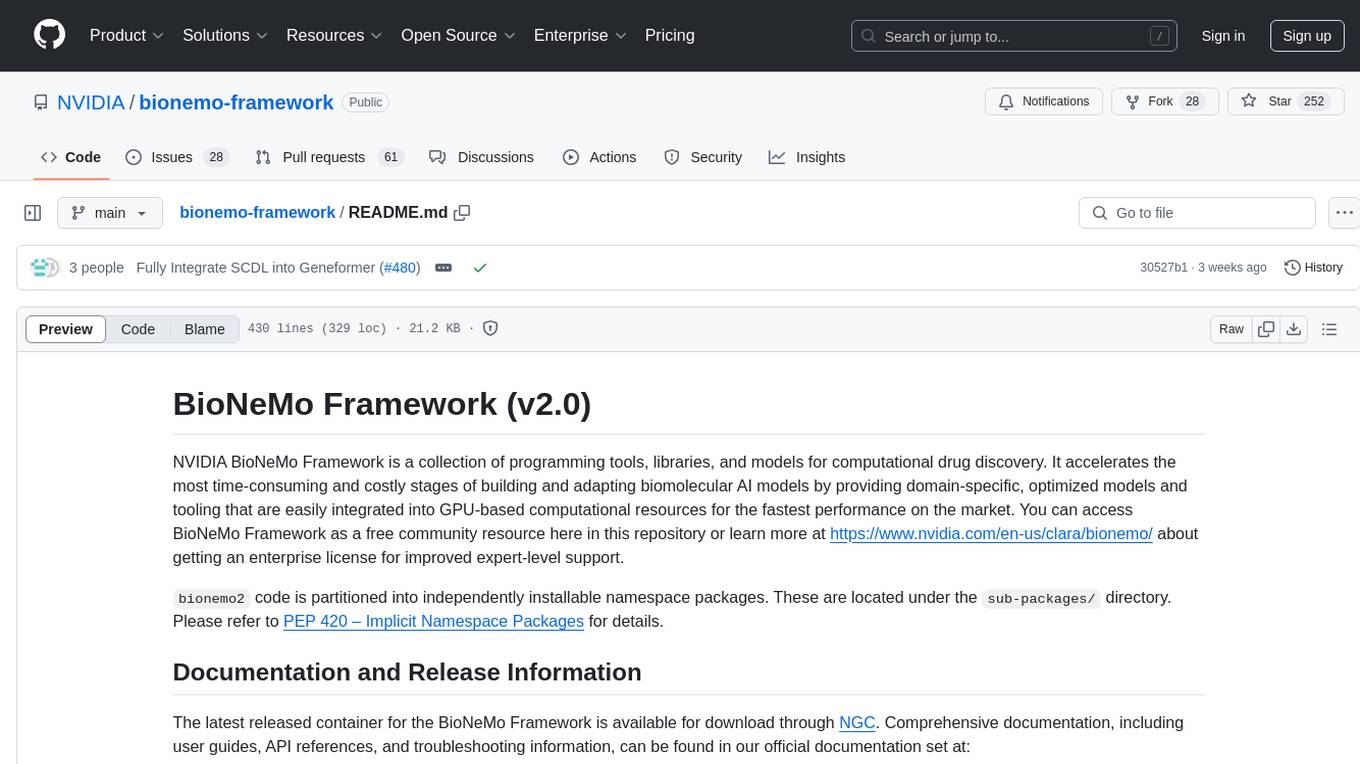
bionemo-framework
NVIDIA BioNeMo Framework is a collection of programming tools, libraries, and models for computational drug discovery. It accelerates building and adapting biomolecular AI models by providing domain-specific, optimized models and tooling for GPU-based computational resources. The framework offers comprehensive documentation and support for both community and enterprise users.
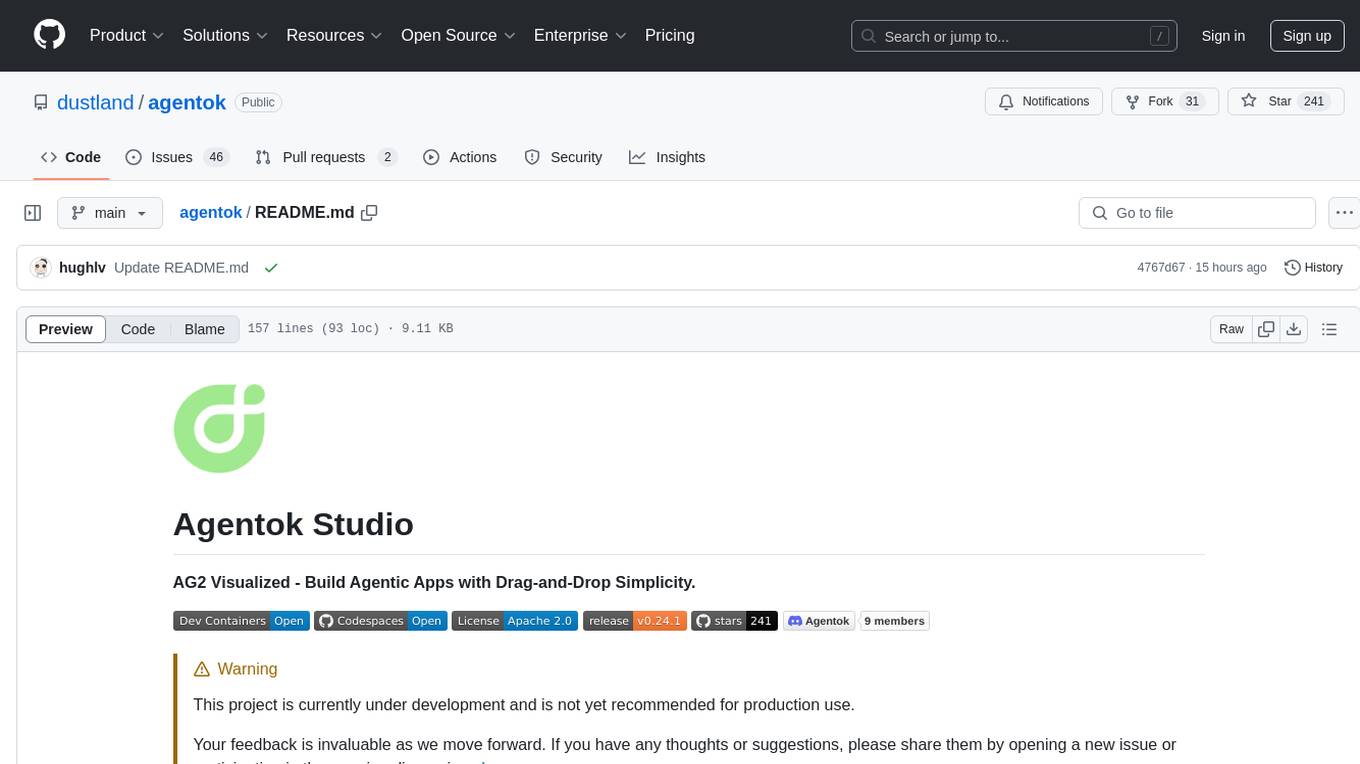
agentok
Agentok Studio is a tool built upon AG2, a powerful agent framework from Microsoft, offering intuitive visual tools to streamline the creation and management of complex agent-based workflows. It simplifies the process for creators and developers by generating native Python code with minimal dependencies, enabling users to create self-contained code that can be executed anywhere. The tool is currently under development and not recommended for production use, but contributions are welcome from the community to enhance its capabilities and functionalities.
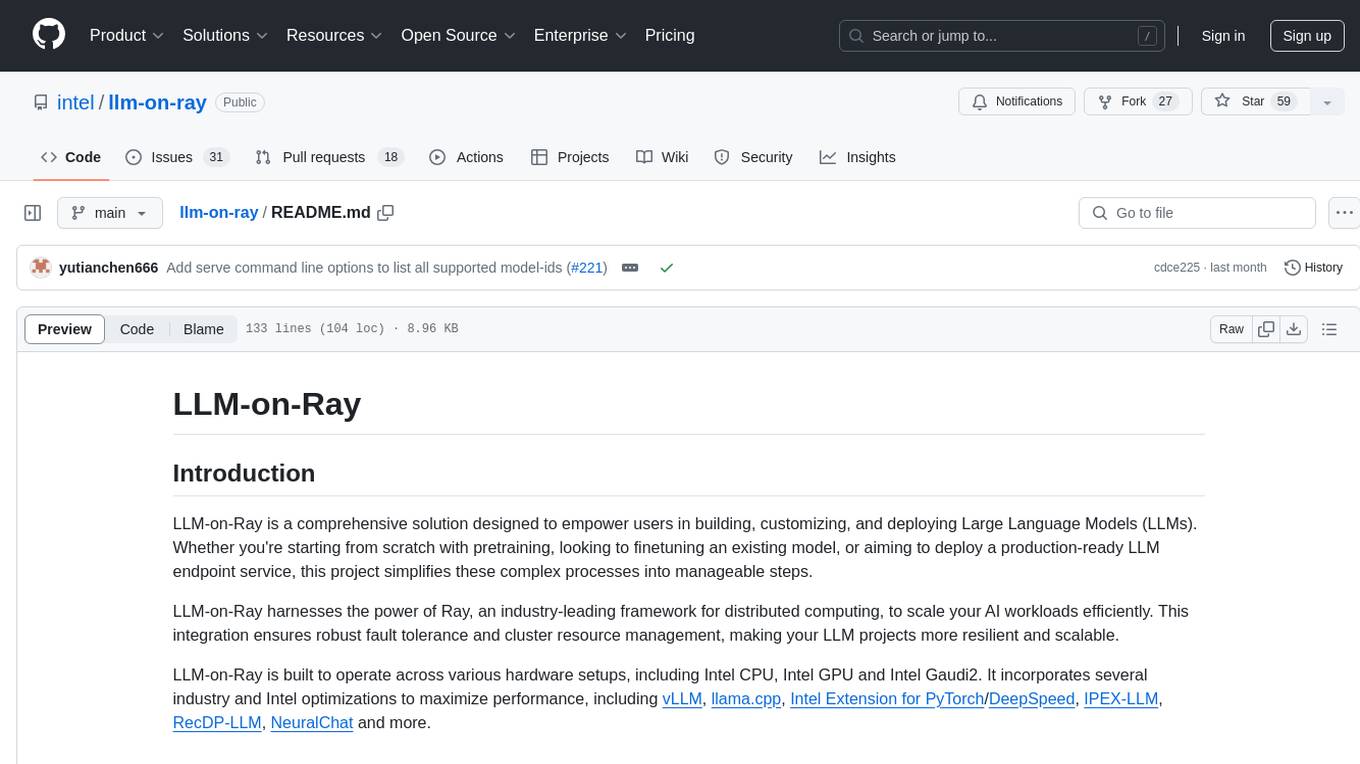
llm-on-ray
LLM-on-Ray is a comprehensive solution for building, customizing, and deploying Large Language Models (LLMs). It simplifies complex processes into manageable steps by leveraging the power of Ray for distributed computing. The tool supports pretraining, finetuning, and serving LLMs across various hardware setups, incorporating industry and Intel optimizations for performance. It offers modular workflows with intuitive configurations, robust fault tolerance, and scalability. Additionally, it provides an Interactive Web UI for enhanced usability, including a chatbot application for testing and refining models.

PanelCleaner
Panel Cleaner is a tool that uses machine learning to find text in images and generate masks to cover it up with high accuracy. It is designed to clean text bubbles without leaving artifacts, avoiding painting over non-text parts, and inpainting bubbles that can't be masked out. The tool offers various customization options, detailed analytics on the cleaning process, supports batch processing, and can run OCR on pages. It supports CUDA acceleration, multiple themes, and can handle bubbles on any solid grayscale background color. Panel Cleaner is aimed at saving time for cleaners by automating monotonous work and providing precise cleaning of text bubbles.
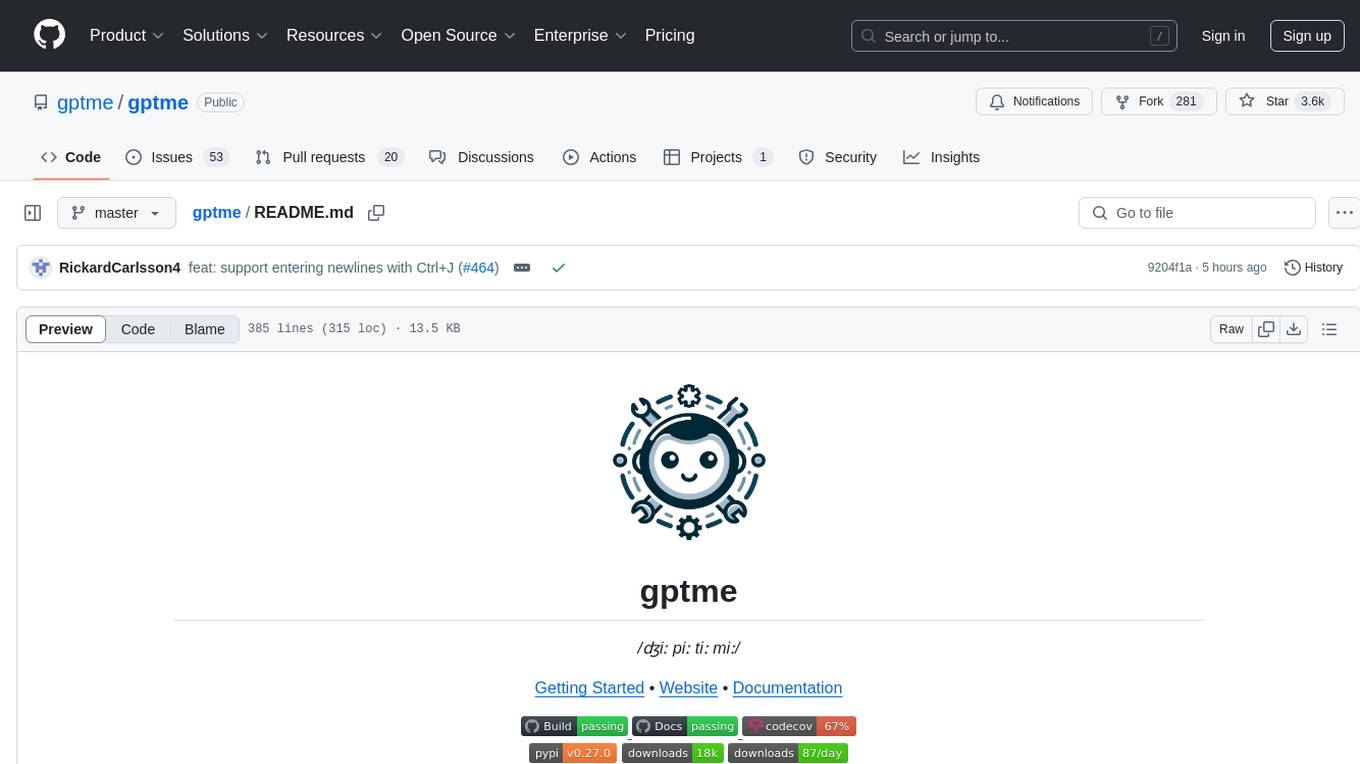
gptme
Personal AI assistant/agent in your terminal, with tools for using the terminal, running code, editing files, browsing the web, using vision, and more. A great coding agent that is general-purpose to assist in all kinds of knowledge work, from a simple but powerful CLI. An unconstrained local alternative to ChatGPT with 'Code Interpreter', Cursor Agent, etc. Not limited by lack of software, internet access, timeouts, or privacy concerns if using local models.
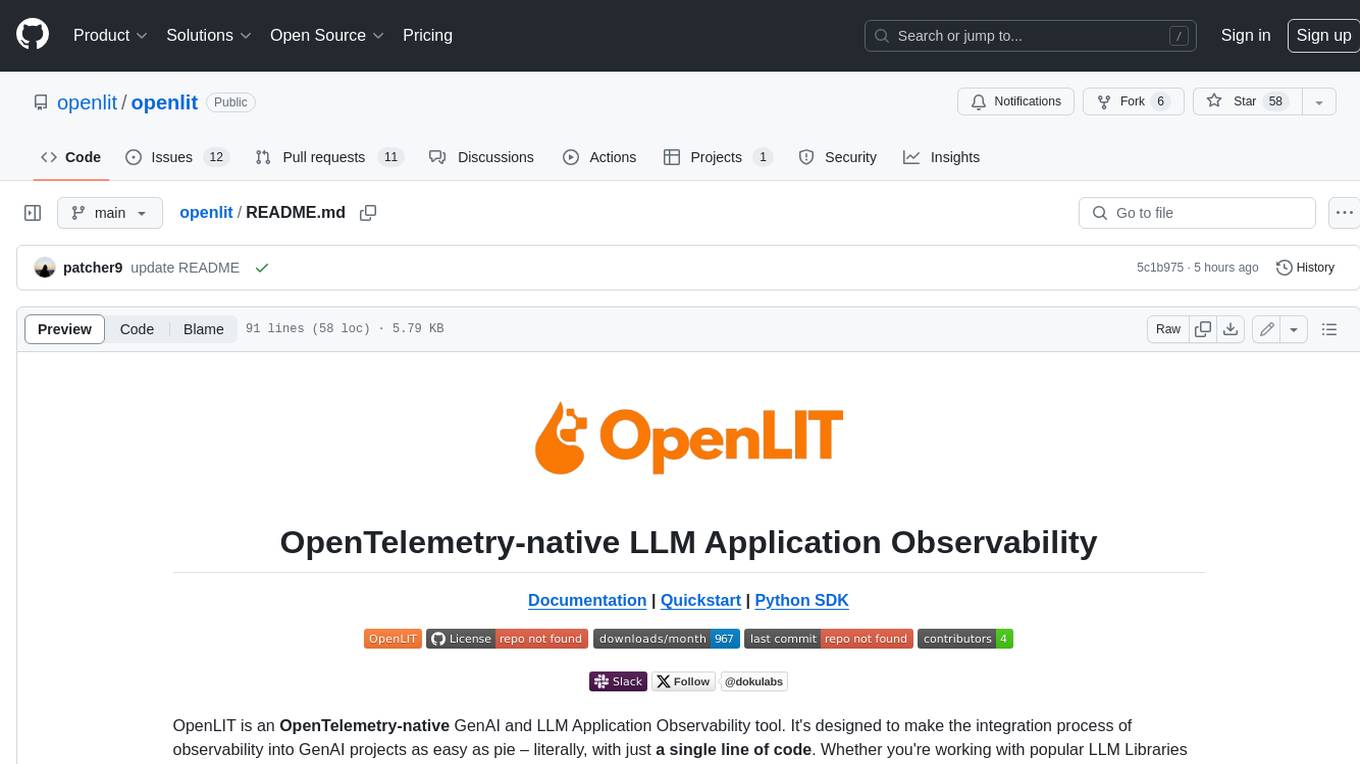
doku
OpenLIT is an OpenTelemetry-native GenAI and LLM Application Observability tool. It's designed to make the integration process of observability into GenAI projects as easy as pie – literally, with just a single line of code. Whether you're working with popular LLM Libraries such as OpenAI and HuggingFace or leveraging vector databases like ChromaDB, OpenLIT ensures your applications are monitored seamlessly, providing critical insights to improve performance and reliability.

sail
Sail is a tool designed to unify stream processing, batch processing, and compute-intensive workloads, serving as a drop-in replacement for Spark SQL and the Spark DataFrame API in single-process settings. It aims to streamline data processing tasks and facilitate AI workloads.
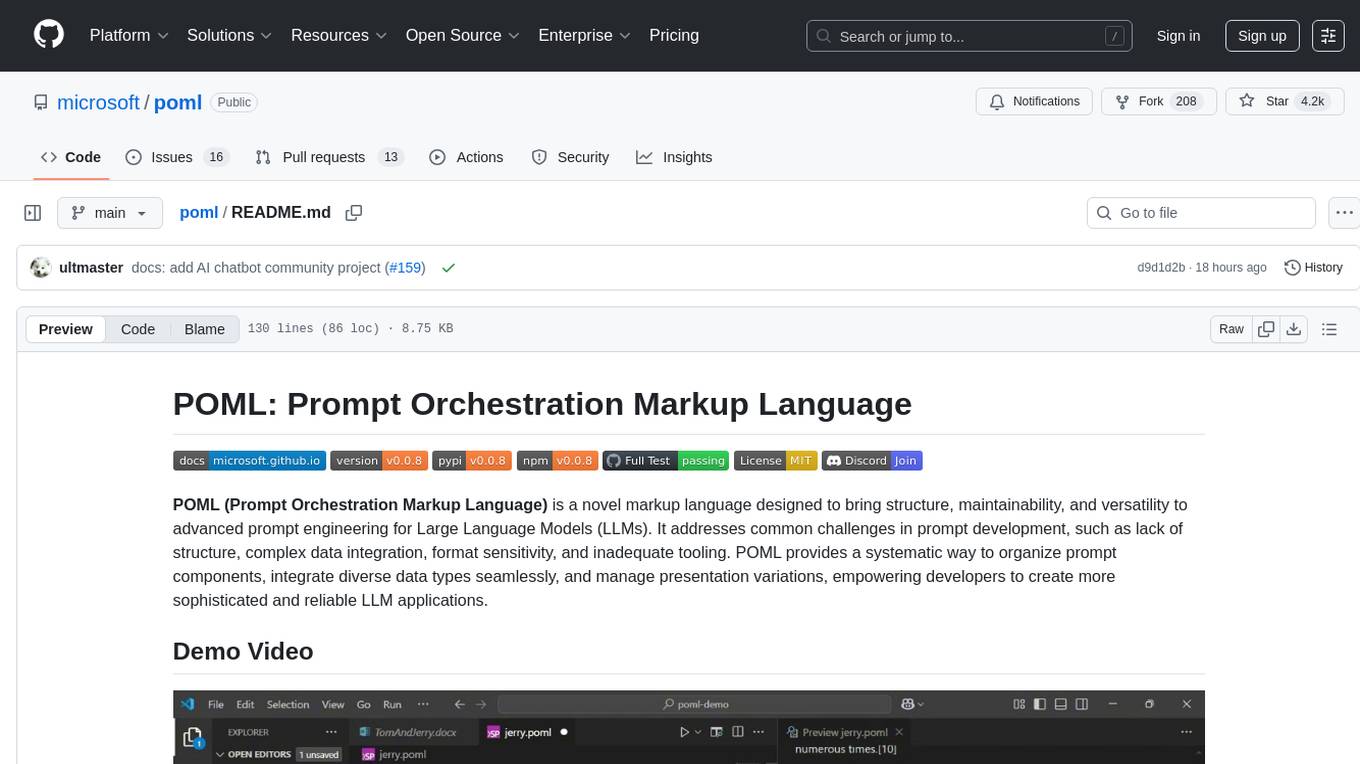
poml
POML (Prompt Orchestration Markup Language) is a novel markup language designed to bring structure, maintainability, and versatility to advanced prompt engineering for Large Language Models (LLMs). It addresses common challenges in prompt development, such as lack of structure, complex data integration, format sensitivity, and inadequate tooling. POML provides a systematic way to organize prompt components, integrate diverse data types seamlessly, and manage presentation variations, empowering developers to create more sophisticated and reliable LLM applications.
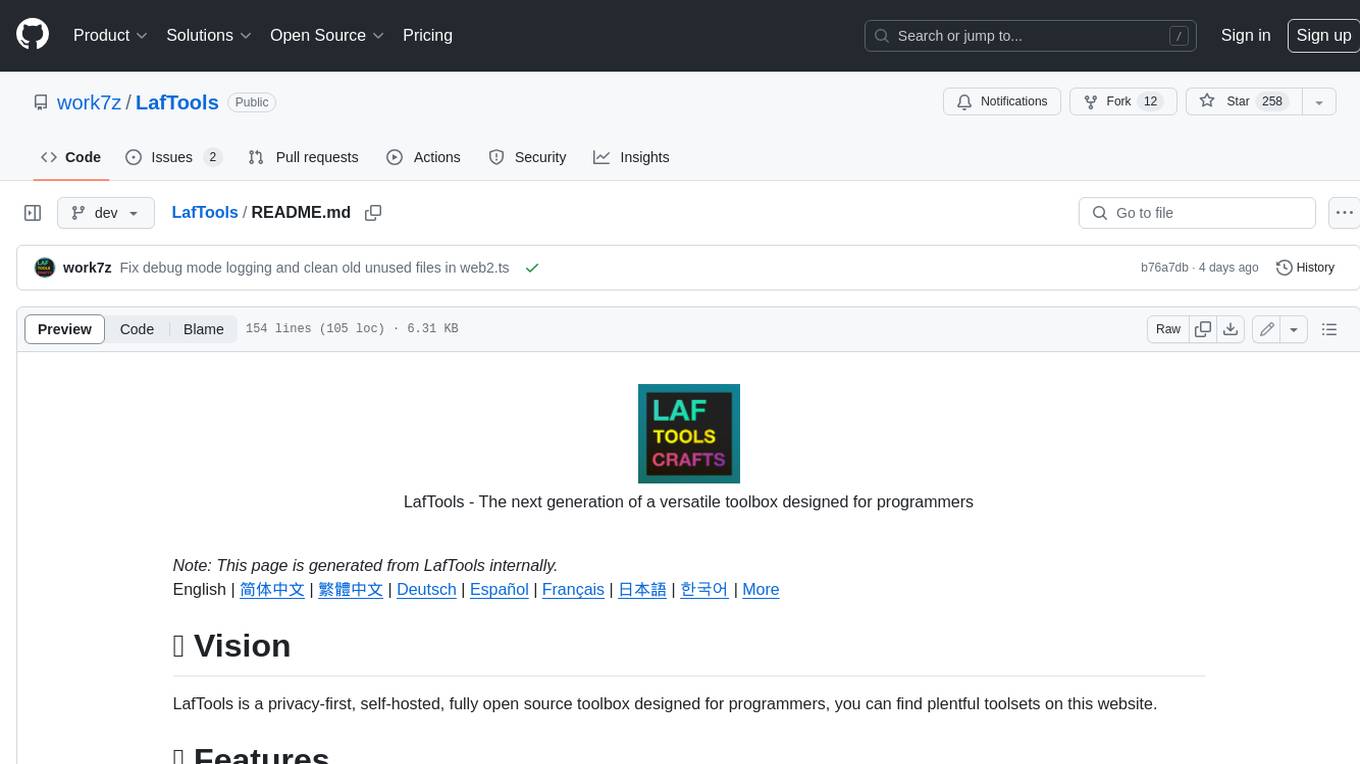
LafTools
LafTools is a privacy-first, self-hosted, fully open source toolbox designed for programmers. It offers a wide range of tools, including code generation, translation, encryption, compression, data analysis, and more. LafTools is highly integrated with a productive UI and supports full GPT-alike functionality. It is available as Docker images and portable edition, with desktop edition support planned for the future.
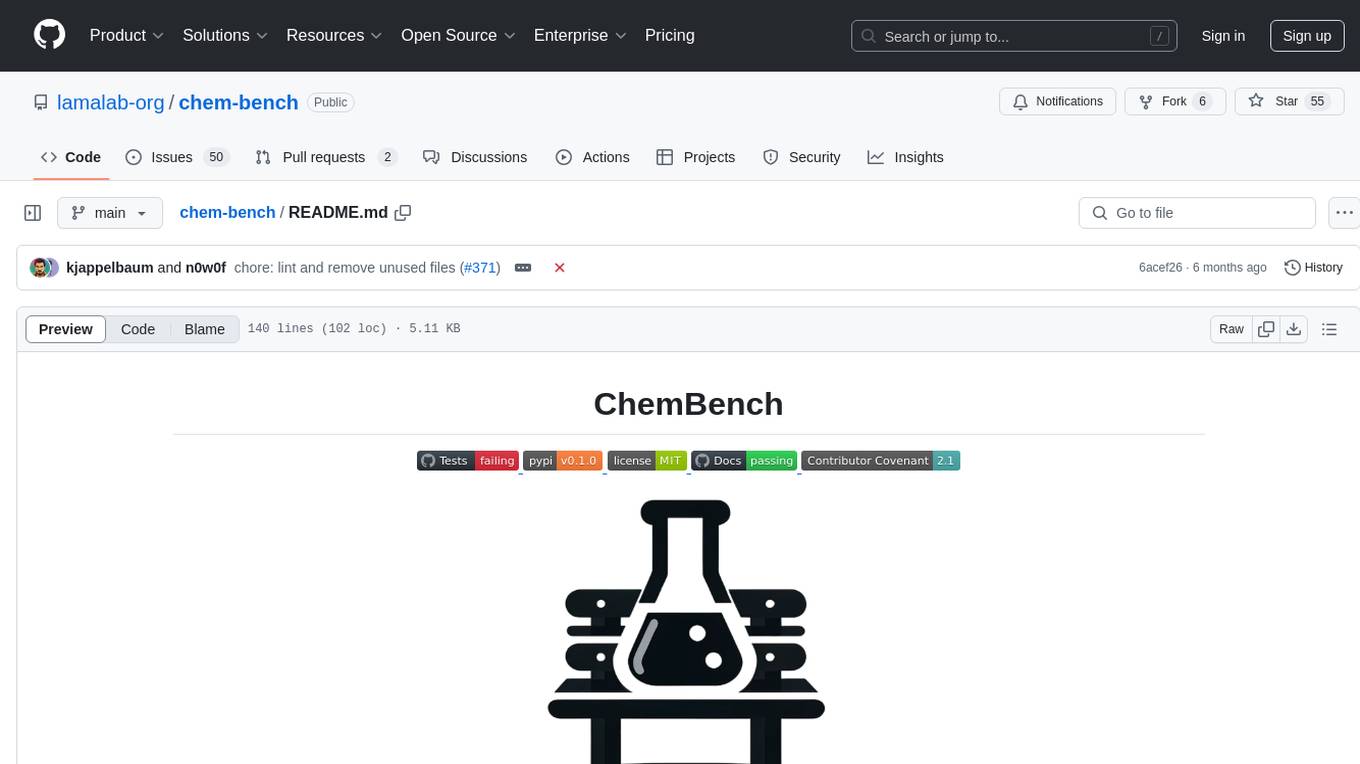
chem-bench
ChemBench is a project aimed at expanding chemistry benchmark tasks in a BIG-bench compatible way, providing a pipeline to benchmark frontier and open models. It allows users to run benchmarking tasks on models with existing presets, offering predefined parameters and processing steps. The library facilitates benchmarking models on the entire suite, addressing challenges such as prompt structure, parsing, and scoring methods. Users can contribute to the project by following the developer notes.

open-parse
Open Parse is a Python library for visually discerning document layouts and chunking them effectively. It is designed to fill the gap in open-source libraries for handling complex documents. Unlike text splitting, which converts a file to raw text and slices it up, Open Parse visually analyzes documents for superior LLM input. It also supports basic markdown for parsing headings, bold, and italics, and has high-precision table support, extracting tables into clean Markdown formats with accuracy that surpasses traditional tools. Open Parse is extensible, allowing users to easily implement their own post-processing steps. It is also intuitive, with great editor support and completion everywhere, making it easy to use and learn.
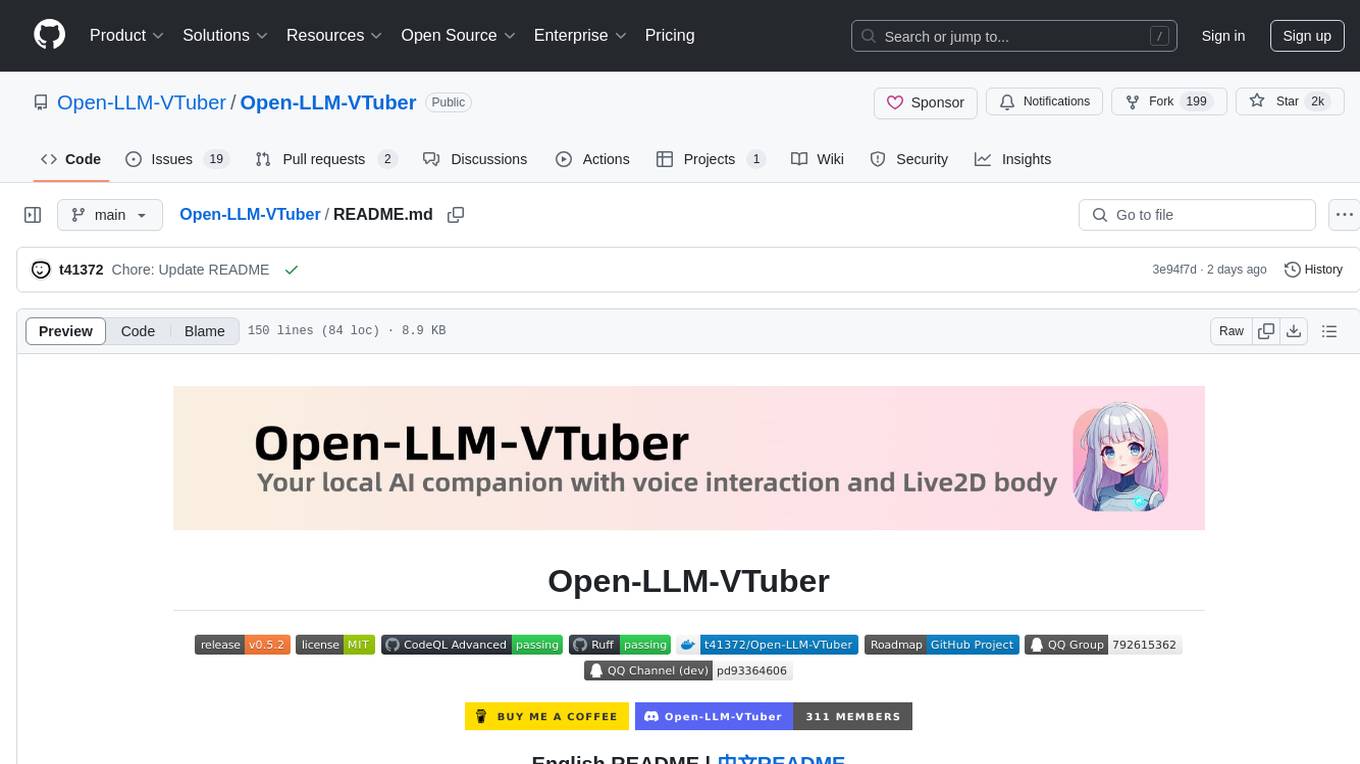
Open-LLM-VTuber
Open-LLM-VTuber is a voice-interactive AI companion supporting real-time voice conversations and featuring a Live2D avatar. It can run offline on Windows, macOS, and Linux, offering web and desktop client modes. Users can customize appearance and persona, with rich LLM inference, text-to-speech, and speech recognition support. The project is highly customizable, extensible, and actively developed with exciting features planned. It provides privacy with offline mode, persistent chat logs, and various interaction features like voice interruption, touch feedback, Live2D expressions, pet mode, and more.
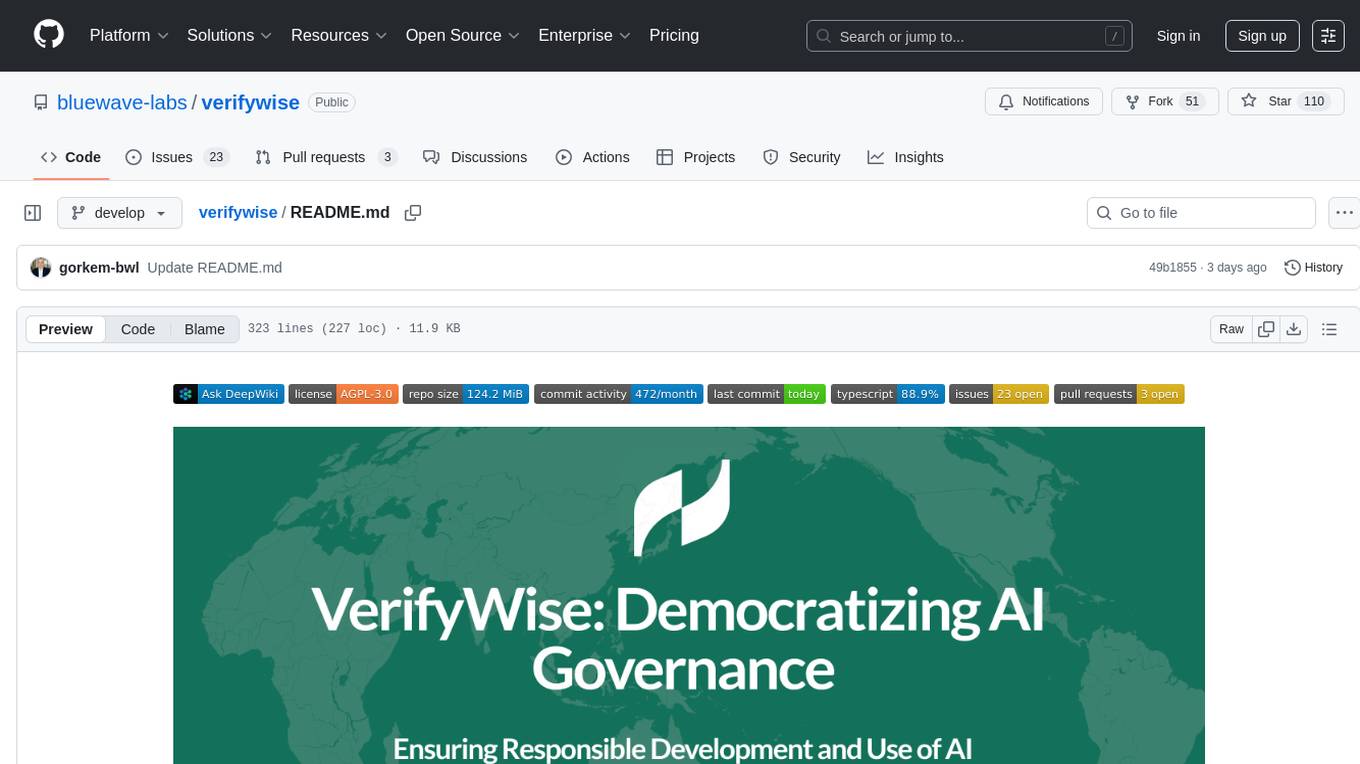
verifywise
VerifyWise is an open-source AI governance platform designed to help businesses harness the power of AI safely and responsibly. The platform ensures compliance and robust AI management without compromising on security. It offers additional products like MaskWise for data redaction, EvalWise for AI model evaluation, and FlagWise for security threat monitoring. VerifyWise simplifies AI governance for organizations, aiding in risk management, regulatory compliance, and promoting responsible AI practices. It features options for on-premises or private cloud hosting, open-source with AGPLv3 license, AI-generated answers for compliance audits, source code transparency, Docker deployment, user registration, role-based access control, and various AI governance tools like risk management, bias & fairness checks, evidence center, AI trust center, and more.
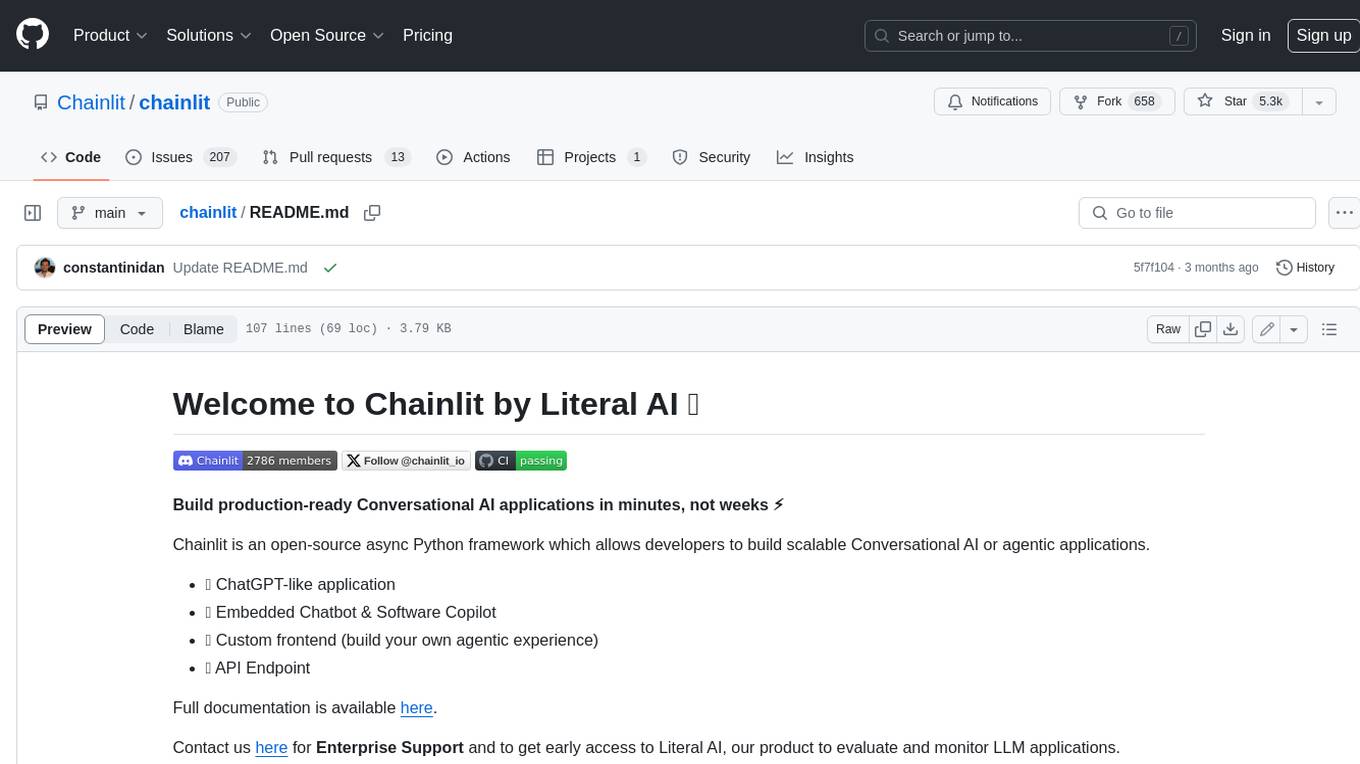
chainlit
Chainlit is an open-source async Python framework which allows developers to build scalable Conversational AI or agentic applications. It enables users to create ChatGPT-like applications, embedded chatbots, custom frontends, and API endpoints. The framework provides features such as multi-modal chats, chain of thought visualization, data persistence, human feedback, and an in-context prompt playground. Chainlit is compatible with various Python programs and libraries, including LangChain, Llama Index, Autogen, OpenAI Assistant, and Haystack. It offers a range of examples and a cookbook to showcase its capabilities and inspire users. Chainlit welcomes contributions and is licensed under the Apache 2.0 license.
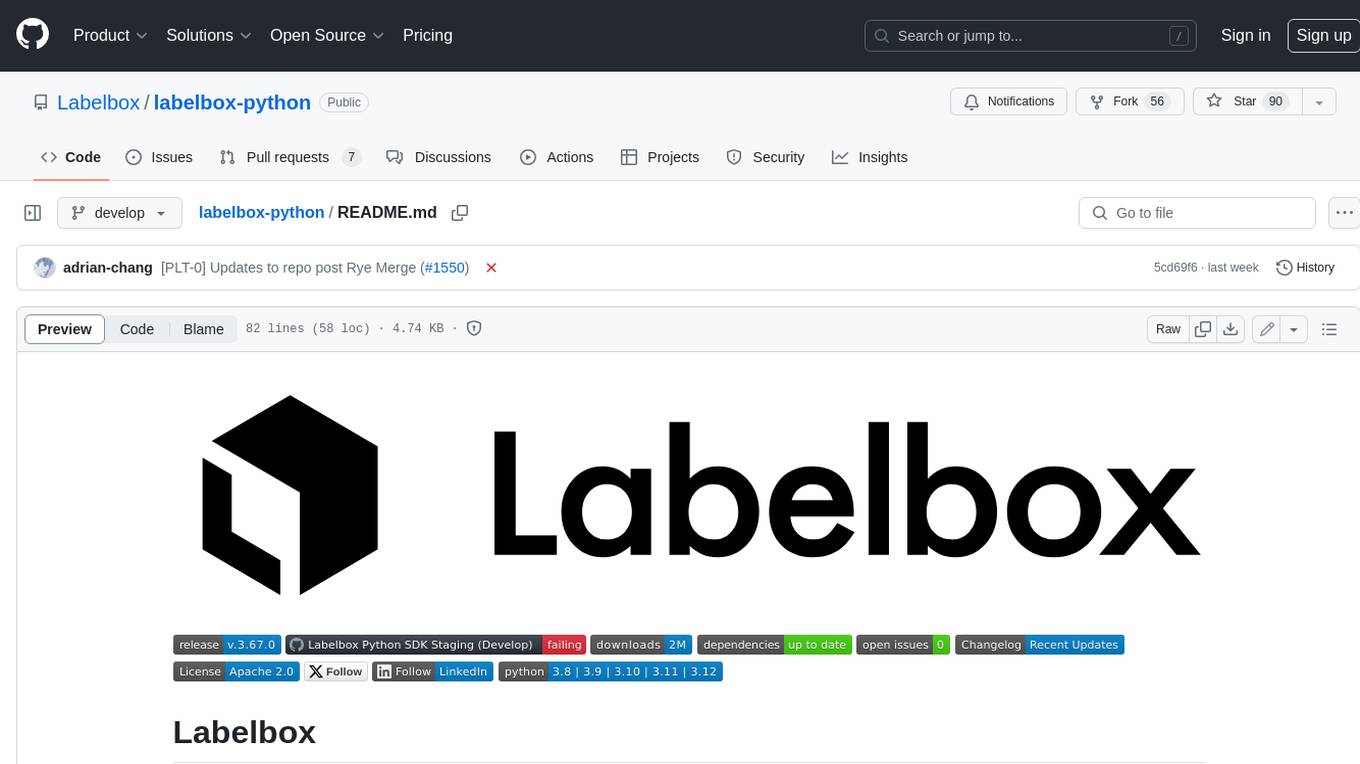
labelbox-python
Labelbox is a data-centric AI platform for enterprises to develop, optimize, and use AI to solve problems and power new products and services. Enterprises use Labelbox to curate data, generate high-quality human feedback data for computer vision and LLMs, evaluate model performance, and automate tasks by combining AI and human-centric workflows. The academic & research community uses Labelbox for cutting-edge AI research.
For similar tasks

Sanmill
Sanmill is a free, powerful UCI-like N men's morris program with CUI, Flutter GUI and Qt GUI. Nine men's morris is a strategy board game for two players dating at least to the Roman Empire. The game is also known as nine-man morris , mill , mills , the mill game , merels , merrills , merelles , marelles , morelles , and ninepenny marl in English.
For similar jobs

promptfoo
Promptfoo is a tool for testing and evaluating LLM output quality. With promptfoo, you can build reliable prompts, models, and RAGs with benchmarks specific to your use-case, speed up evaluations with caching, concurrency, and live reloading, score outputs automatically by defining metrics, use as a CLI, library, or in CI/CD, and use OpenAI, Anthropic, Azure, Google, HuggingFace, open-source models like Llama, or integrate custom API providers for any LLM API.

Sanmill
Sanmill is a free, powerful UCI-like N men's morris program with CUI, Flutter GUI and Qt GUI. Nine men's morris is a strategy board game for two players dating at least to the Roman Empire. The game is also known as nine-man morris , mill , mills , the mill game , merels , merrills , merelles , marelles , morelles , and ninepenny marl in English.


